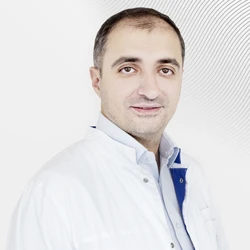Tells Tatiana Balashova,
otorhinolaryngologist-surgeon, doctor of the highest category, Ph.D.
Specialists of the EMC Otorhinolaryngology Clinic have recently begun to note an increase in the number of patients who complain of acute ear pain or swelling in the ear area. One of the most common factors that can cause acute otitis externa, inflammation of the structures of the ear canal and/or auricle, is improper hygiene of the ear canal. We have all been taught since childhood to wash our ears, but few people know that it is not only unnecessary, but also dangerous to carry out internal ear cleaning.
Ear hygiene
On the surface of the skin of the external auditory canal are sebaceous and sulfur glands, hair follicles. The glands produce a secret that connects with dead skin cells and forms earwax, which regulates metabolic processes in the ear, maintains the correct balance of flora (bacteria, fungi, etc.) and helps to remove pathogenic agents from the ear. Artificial removal of sulfur from the ear is equivalent to the process of removing saliva from the mouth. The natural evacuation of earwax from the external auditory canal occurs during chewing food and shampooing. In a normal state, sulfur leaves the ear only as much as is necessary for the normal functioning of the ear canal, this is a self-regulating process. If this process is disrupted, for example, by frequent ear cleaning, the work of natural defense mechanisms is disrupted.
Please note that manufacturers of cotton swabs indicate on the packaging that they are not suitable for cleaning ears and nose. It is clear that hygiene of the ear canal with matches, toothpicks, etc. is an even more dangerous manipulation. Such actions can lead to minor injuries to the skin of the ear canal, which disrupts its protective mechanisms and can lead to infection of the wound.
Attempts to extract the sulfur plug using cotton swabs are also extremely dangerous. The result of such actions is the pushing of the plug inside and the appearance of inflammation of the skin of the outer ear.
Other factors that contribute to the development of acute otitis externa are:
-
the ingress and stagnation of water into the ear canal when swimming in a pool or natural bodies of water (river, sea, standing bodies of water) can serve as an irritating and infection-provoking factor contributing to the occurrence of acute otitis externa. Hence, another name for otitis externa is "swimmer's ear."
-
prolonged use of headphones often leads to disruption of air circulation in the external auditory canal, difficulty separating sebaceous and sulfur gland products and the development of various kinds of infections in it. Especially if the headphones are of an obturating type and are not used individually.
-
metabolic disorders in the body due to various diseases (diabetes mellitus, allergies), systemic skin diseases such as psoriasis, neurodermatitis, allergic dermatitis, etc.
-
viral infections such as, for example, influenza, herpes.
-
bacterial infections (staphylococcal, streptococcal, protozoa, etc.)
-
fungal infections (mycosis, candidiasis, etc.)
Infection of the outer ear
The patient develops the main symptoms of acute otitis externa: pain in the ear, which increases when chewing, opening the mouth, pulling on the auricle, pressing on the tragus – a cartilaginous formation at the base of the auricle in front of the ear canal. The pain is often accompanied by a feeling of stuffiness in the ear or even hearing loss, itching, swelling and redness of the entrance to the ear canal, the auricle and the skin around it. There may be an increase in body temperature, discharge from the ear canal with an unpleasant odor. If you have such complaints, you should contact a specialist immediately.
At the EMC Otorhinolaryngology Clinic, a doctor diagnoses acute otitis externa using an ENT microscope, which gives a specialist an enlarged image of the structures of the outer ear and eardrum. This allows you to diagnose the nature of the discharge, determine if there is a lesion of the eardrum and differentiate the form of otitis media (external, otitis media, myringitis), when the inflammation is limited only to the eardrum. Usually, after such an examination, the doctor makes a diagnosis of otitis externa. To clarify the form of otitis media, identify the causative agent and prescribe the correct treatment, a swab from the external auditory canal is additionally taken for bacterial or fungal flora, sometimes it may be necessary to examine certain blood parameters (for example, a blood test for sugar, for various infections).
At the initial treatment, outpatient treatment is prescribed, which is adjusted based on the results of the conducted studies. If necessary, the doctor cleanses the ear canal from the pathological discharge.
Treatment of otitis externa in EMC
We prefer treatment using corticosteroids. Firstly, our practice has shown that such therapy has an instant effect and the symptoms go away on the very first day of treatment. Secondly, hormonal drugs have a complex effect, which replaces the combined use of a large number of drugs aimed at eliminating a single problem (i.e., drugs that have anti-inflammatory, decongestant, and antiallergic effects individually). This therapy is prescribed for a short period of time, which does not cause side effects and undesirable hormonal changes, but selectively affects where help is needed. In parallel, local medications are prescribed in the form of drops or ointments with a combined effect.: antibacterial, antifungal, anti-inflammatory, analgesic, antiallergic, depending on the form and course of otitis media. With timely access to a specialist, proper treatment and the fulfillment of all doctor's prescriptions, the prognosis of acute otitis media is favorable. Usually, the pain disappears within 1-2 days, and full recovery occurs after 7-10 days. In some cases, with severe or complicated forms of otitis media, it is possible to hospitalize and treat the patient in a hospital setting.
Complications of otitis externa
Possible complications of acute otitis externa in the absence of treatment may be the transition of otitis media to a chronic form, the spread of inflammation to nearby organs: inflammation of the auricle and surrounding tissues, inflammation of the middle ear, and the malignant form of otitis media - necrotizing otitis media, which occurs with severe swelling of tissues and is accompanied by tissue death. The course of the disease can be complicated by the development of boils and abscesses of the outer ear and surrounding tissues.
In order to avoid the problems described above, we pay special attention to the correct approach to auricle hygiene for our patients. First, if you still have a desire to mechanically remove excess moisture and dirt from the ear, then use special cotton swabs with a limiter marked "safe for the ears" or "safe for the eardrum", their design prevents injury to the skin of the outer ear. These sticks can be purchased at a pharmacy. Currently, the pharmaceutical industry produces special preparations based on soda solutions that can be used 1.5-2 times a month to prevent sulfur plugs. Their action is aimed at softening earwax, which contributes to easier evacuation of it from the ear. Such drugs have no contraindications or age restrictions.
Author: Tatiana Balashova, otorhinolaryngologist-surgeon, doctor of the highest category, Candidate of Medical Sciences






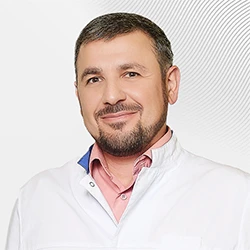



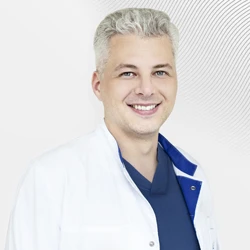

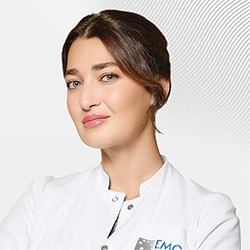
.webp)


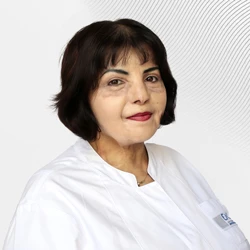

.webp)
